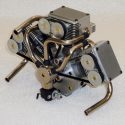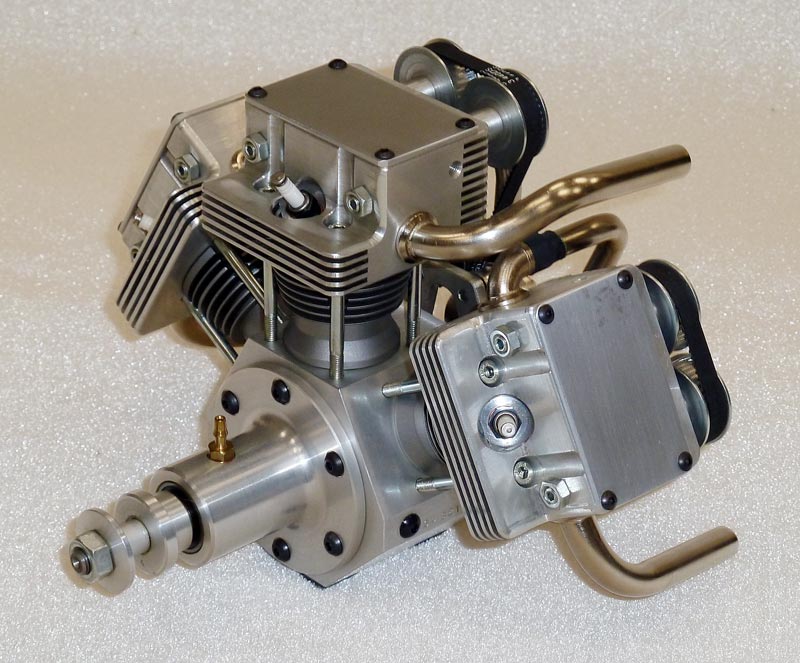Hubert Schillings, of Germany, designed several miniature engines from 1970 to 1980. Configurations vary from 1-cylinder aircraft engines to 2-, 3-, 4-, 6- and 8-cylinder inline and V-type engines for both aircraft and automobiles. Most of his engines were machined from aluminum bar stock, although a few were machined from magnesium.
This 3-cylinder (fan-configuration) Dual-Over-Head-Cam (DOHC) engine has all cylinders above the center line, but uses a master rod and 2 articulating rods like those used in a radial engine. Each cylinder has two valves (one for intake and one for exhaust) and the camshafts are belt driven 1:2 off of the crankshaft. Two camshafts operate the valves in each cylinder head. One camshaft operates the intake valves and the other the exhaust valves, thus “dual overhead cams.” Finished in 1975, this engine is 8″-long, 9″-wide, 6″-high, and weighs 5 lbs.
Typically, Schillings used belts to drive the cams rather than gears and rarely enclosed the belt-drive into a housing. It is believed that less than 6 of these 3-cylinder (Fan) type engines were fabricated by Huber Schillings.


